In 1953, Trinity Parish Church, now Cathedral, in San Jose, replaced the console of their organ, vintage 1894, which had been donated by The Boom's great grandmother.
(There are 18 mechanically rung bells in the tower. The Boom was bell-ringer there when he was in college. He was also an acolyte).
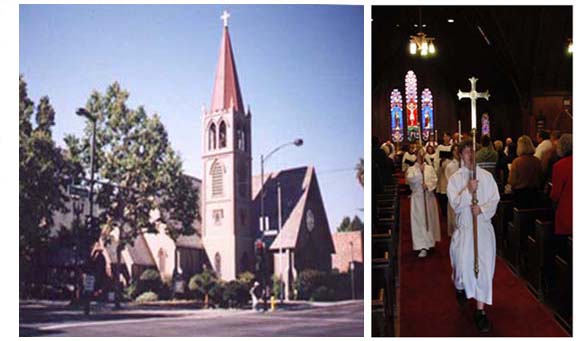
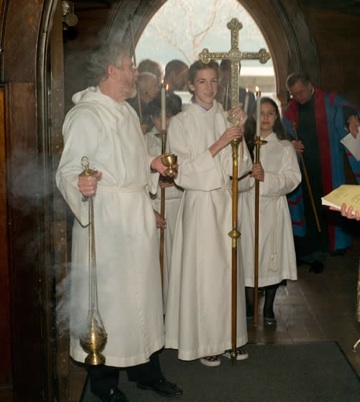
In 1953, the young Boom rescued the three manual and pedal console and two sets of pipes which had been replaced in the organ, and started a project that just about got him thrown out of his home. Here is the console in the grandparents' Pergola (summer house) on The Alameda in San Jose.
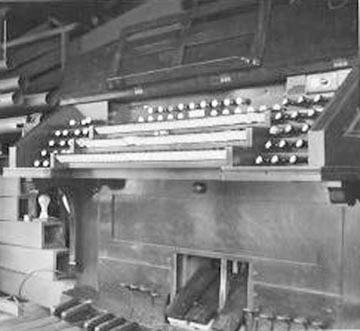
The Boom installs the console and the two sets of pipes in the Pergola. It's an outdoor organ!
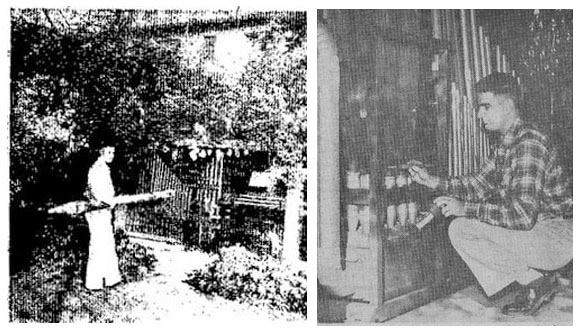
Photos from The Spartan Daily, San Jose State University, 1954.
Bill Reid, long-time organ builder from Santa Clara, inspired The Boom to keep at it over the years. Bill gave much advice, organ parts, and experience towards the project.
Our first windchests used pinball machine electromagnets to open valves in simple windchests we made out of fir boards. The wind supply was a vacuum cleaner set on blowjob. With the clicking of the magnets, the first two ranks sounded like a musical typewriter. The two ranks were a 8’ Viola da Gamba and a 16’ Trombone. We made the resonators for the latter from redwood fence boards because someone beat us to the originals for firewood.
Then we started collecting pipes from old organs and using professional chest magnets for the valves. Here an 8' Principal is added, donated by Bill Reid in 1954.
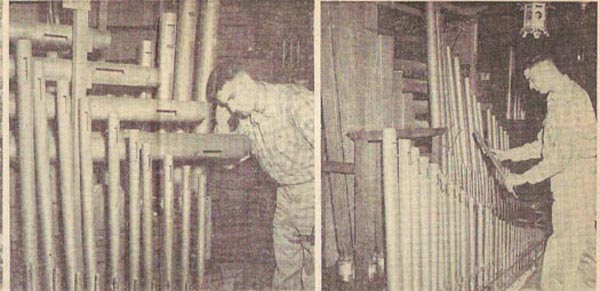
Photo by San Jose Mercury/Evening News 1954
Because the Pergola is only slightly higher than two meters, the bass pipes of the Principal are mitred over the console and the Viola da Gamba bass pipes are mounted horizontally. The 16' Trombone pipes are stacked on their sides behind the pipes pictured here. The Pergola is now enclosed and called The Gothic Concert Hall.
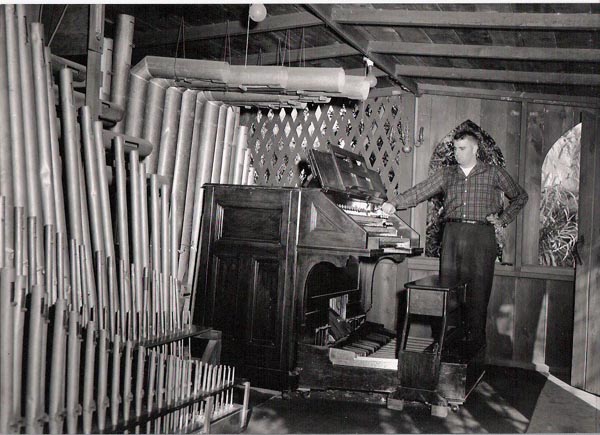
In 1955, an old Estey seven rank house organ was obtained and installed in an attached room seen through the "gothic" door at the left.
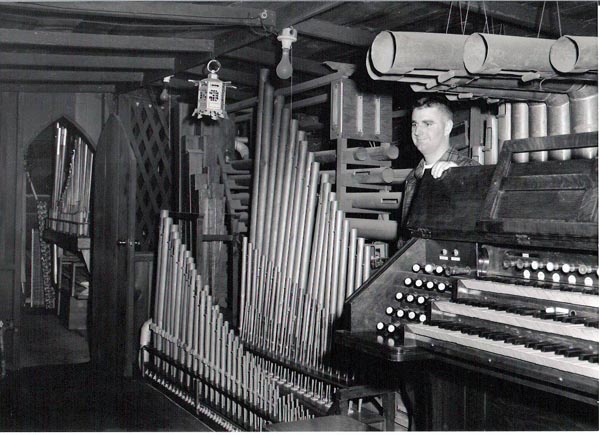
An 8' Trumpet was installed just in time to perform for the 1956 Boomympic Games.
In 1956, Boom started teaching Chemistry and Physics at San Lorenzo Valley High School, so we moved from San Jose to Bonny Doon in the Santa Cruz mountains.
And the Santa Cruz Sentinel found out about our crazy project.
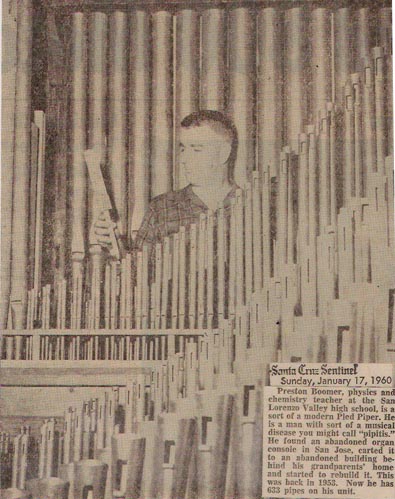
Then we built the Chapel Royal for the organ. This building measures only six by ten meters. It is six meters high to accomodate the bass organ pipes.
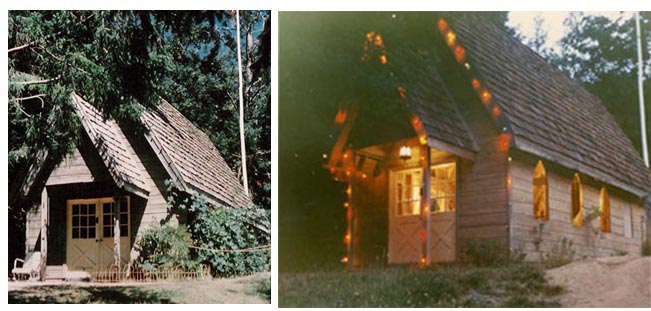
Many years later we salvaged the Odell Organ from Sacramento Cathedral. We saved the two eleven rank windchests for our Great and Hinterwerke divisions. The Schoenstein company had added electro-pneumatic pulldowns and stop actions to the Cathedral Organ which had been a tracker. Yukkie!
So that’s when we decided to convert to mechanical action and Baroque voicing having been inspired to do so by E. Power Biggs’ demo recording in which he showed how magnificent Baroque organs sounded. Comparing Romantic organs to Baroque organs, Biggs cited, “By contrast, that sound is wooly”.
We also had to convert the Trinity console and the stop actions to mechanical action.
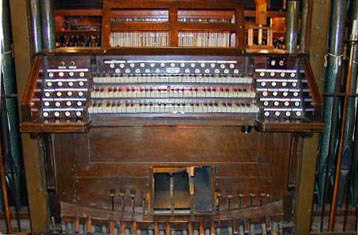
So now we have two divisions (22 ranks) of tracker action, and the Choir manual is direct electric action to the Oberwerke and Gallery divisions.
The pedal stops are electro-pneumatic.
The wind pressure is 60 mm of water. Here are our manometers.
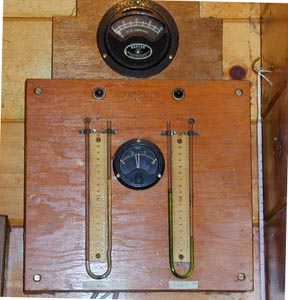
The bass principal pipes on either side of the console are tubed off with 25 mm heavy duty garden hoses up to 3 meters long. A couple of wind lines are made of clothes dryer hoses.
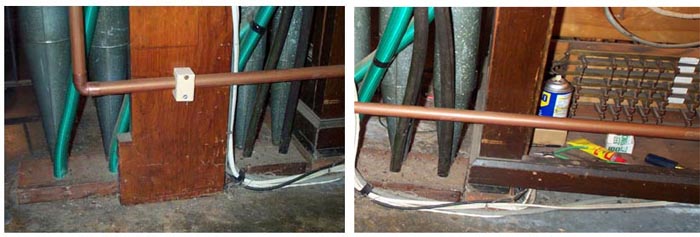
Dowels are used for the stickers from the console to the squares, and brazing rods were used for the trackers. Later the brazing rods were replaced with lighter aluminum trackers.
![]()
Hex bolts are used for linking the backfalls to the stop action sliders. It's a local accomplishment.
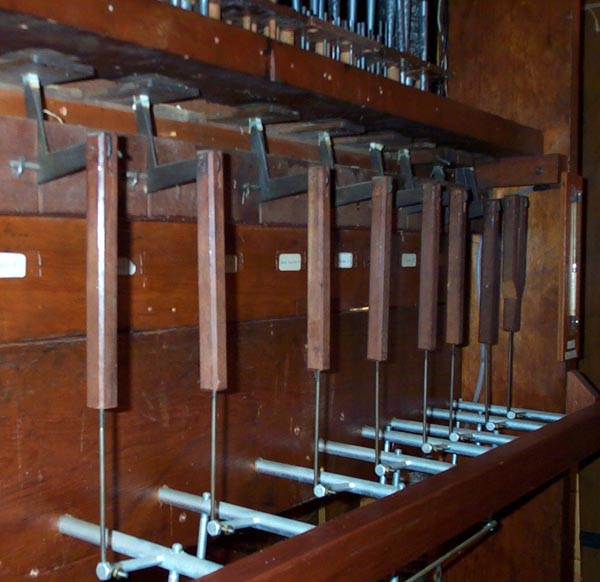
Since then generations of Boom's students have helped with the building of this organ. They have done thousands of hours of work on all those intricate mechanisms that you will see as you explore it.

Here two dedicated enthusiasts revoice old romantically voiced pipes to the clean bright sound of baroque voicing. They are filling in the nicks in the mouths of the pipes to improve the attack of each note. A romantic pipe oozes into muddy speech whereas classic voicing begins its song with a bright chiff.
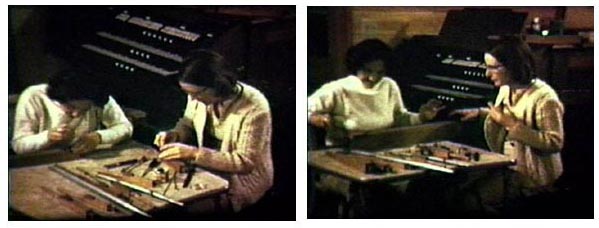
Here the organist sets combinations of stops to accompany the brass players in the Gallery.
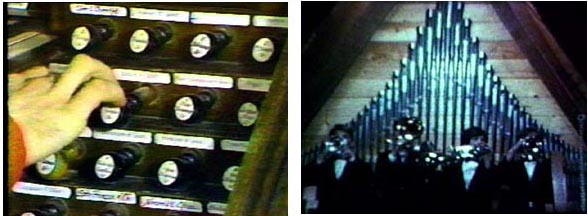
The Sacramento electric action console was added beneath the Gallery Organ. It can play the stops found on the Choir manual (bottom keyboard) of the main console. Now we can perform those magnificent dialogues of Renaissance musick written for two antiphonal instruments.
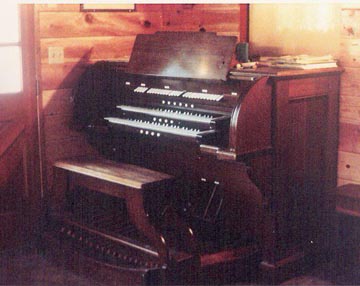
We've since stripped this console down to one manual to allow more room for people in the Chapel Royal.
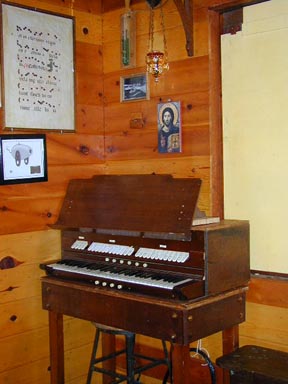
John West, a venerable organ builder of great esteem, has revoiced the pipes to give them the authentic sound of the Renaissance and the Baroque periods.
Bill Visscher added the 16' Dulziaan and the built the Zimbelstern (little bells) and maintains the tuning for concerts and the Christmas Carol sing.
John Haskey makes great recordings of the events. Some of those can be heard on the previous page.
Keyboard musicians are invited to come play this instrument.